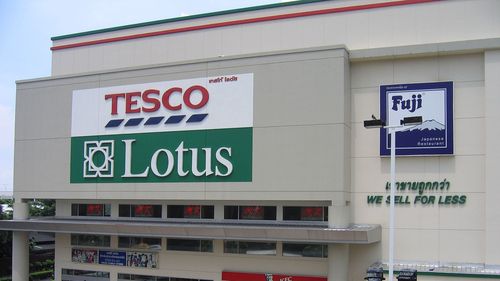**Title: Navigating Tesco's E-commerce Venture in Thailand**
**Introduction**
Tesco's foray into e-commerce in Thailand represents a strategic move to tap into the rapidly growing online retail market in the country. With the Thai population increasingly turning to online shopping for convenience and variety, Tesco's online platform offers an opportunity to expand its reach and cater to evolving consumer preferences. In this analysis, we'll delve into the dynamics of Tesco's e-commerce venture in Thailand, exploring its strategies, challenges, and potential avenues for success.
**Market Overview**
Thailand's e-commerce market has witnessed significant growth in recent years, driven by factors such as increasing internet penetration, rising smartphone usage, and changing consumer lifestyles. According to market research, the e-commerce market in Thailand is projected to reach [provide latest figures] by [year], indicating ample opportunities for retailers like Tesco to capitalize on this trend.
**Tesco's E-commerce Strategy**
Tesco's entry into the Thai e-commerce market is underpinned by a multifaceted strategy aimed at leveraging its existing infrastructure, brand recognition, and understanding of local consumer preferences. Key components of Tesco's e-commerce strategy in Thailand include:
1. **Omni-channel Integration:** Tesco has adopted an omni-channel approach, seamlessly integrating its online platform with its extensive network of physical stores. This integration allows customers to shop conveniently across channels, whether online or offline, and provides options for delivery or in-store pickup.
2. **Product Assortment:** Tesco offers a diverse range of products on its e-commerce platform, spanning groceries, household essentials, electronics, and more. By catering to a wide array of consumer needs, Tesco aims to become a one-stop destination for online shoppers in Thailand.
3. **Logistics and Fulfillment:** Efficient logistics and fulfillment are crucial for the success of any e-commerce venture. Tesco has invested in robust logistics infrastructure and delivery capabilities to ensure timely and reliable fulfillment of orders, thereby enhancing the overall customer experience.
4. **Digital Marketing and Promotions:** Tesco leverages digital marketing channels and targeted promotions to engage with customers and drive traffic to its e-commerce platform. Through personalized offers, discounts, and loyalty programs, Tesco aims to incentivize repeat purchases and foster customer loyalty.
**Challenges and Considerations**
While Tesco's e-commerce venture in Thailand holds promise, it also faces several challenges and considerations that warrant attention:
1. **Competition:** The Thai e-commerce market is highly competitive, with both domestic and international players vying for market share. Tesco faces competition from established players like Lazada, Shopee, and local grocery delivery services.
2. **Infrastructure and Technology:** Ensuring robust infrastructure and scalable technology solutions are essential for meeting the demands of e-commerce operations, including website reliability, inventory management, and order fulfillment.
3. **Last-Mile Delivery:** Last-mile delivery remains a logistical challenge in Thailand, particularly in densely populated urban areas. Tesco needs to optimize its delivery network and explore innovative solutions to ensure timely and efficient delivery to customers' doorsteps.
4. **Localization:** Adapting to local preferences and cultural nuances is crucial for success in the Thai market. Tesco must continually refine its product offerings, marketing strategies, and customer engagement initiatives to resonate with Thai consumers.
**Recommendations for Success**
To succeed in its e-commerce venture in Thailand, Tesco should consider the following recommendations:
1. **Invest in Technology:** Continuously invest in upgrading technology infrastructure to enhance website performance, optimize the shopping experience, and streamline operations.
2. **Strengthen Logistics:** Focus on strengthening last-mile delivery capabilities through strategic partnerships, investment in logistics technology, and optimization of delivery routes.
3. **Personalization and Localization:** Leverage data analytics to personalize the shopping experience, tailor product recommendations, and localize marketing efforts to better connect with Thai consumers.
4. **Expand Product Range:** Regularly assess market trends and consumer preferences to expand and diversify product offerings, catering to a wider range of customer needs and preferences.
**Conclusion**
Tesco's venture into e-commerce in Thailand presents both opportunities and challenges in a dynamic and competitive market landscape. By adopting a customer-centric approach, investing in technology and logistics, and staying attuned to local market dynamics, Tesco can position itself for success and establish a strong foothold in Thailand's burgeoning e-commerce sector.

免责声明:本网站部分内容由用户自行上传,若侵犯了您的权益,请联系我们处理,谢谢!











